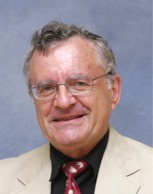Whales and Neanderthals: Smarter Than We Thought
By Shlomo Maital


Two brilliant Science columns – on the same page of the New York Times – reveal an important truth. Whales and Neanderthals are (were) a lot smarter than we realized. And my corollary – we humans are a lot dumber than we think.
Whales: Carl Zimmer reports on a combined team of marine biologists and computer scientists, who in 2020 joined forces “to analyze the click-clacking songs of sperm whales…. Last week the scientists reported that the whales use a much richer set of sounds than previously known, which they called a ‘sperm whale phonetic alphabet’.”
People use a phonetic alphabet — an alphabet containing a separate character for each distinguishable speech sound – to make an infinite variety of words, in order to communicate. Shane Gero, a Canadian marine biologist, thinks it is possible that sperm whales similarly turn their phonetic click-clack whale songs into a language! *
* Sharma, P., Gero, S., Payne, R., Gruber, D. F., Rus, D., Torralba, A., & Andreas, J. (2024). Contextual and combinatorial structure in sperm whale vocalisations. Nature Communications, 15(1), 3617.
Sperm whales are amazing, for many reasons. They emit sounds at 230 decibels – more than an aircraft jet engine at takeoff. – They are by far the loudest animal in the world. And they have been around for a very long time – dating back more than 5 million years.
Humans decimated sperm whales for their oil – but today, there are hundreds of thousands of them and they are no longer hunted (the Japanese do take a small number for their dinner tables).
. . . . .
And Neanderthals? They ranged from Russia to Western Europe, thrived, and lived for some 300,000 years. We do not know for sure why they went extinct. Some theories: Transmission of diseases from humans, interbreeding with early humans, climate change. But we do know that Homo Sapiens, us, has Neanderthal genes. The percentage of Neanderthal DNA in modern humans is zero or close to zero in people from African populations (probably because Neanderthals may have originated there but left, heading North), and is about 1 to 2 percent in people of European or Asian background.
Neanderthals have a cartoon reputation as primitive ‘cavemen’. But they had big brains – 1,200 to 1750 cubic centimeters. Human brains average 1,300 cubic centimeters, a bit smaller. Excavations in a huge cave in Kurdistan – the Shanidar Cave – reveal Neanderthals had sophisticated family lives, made great wooden tools, and treated each other’s injuries.
An anthropologist, Annamieke Milks, Univ. of Reading, UK, analyzed the wooden spears Neanderthals used. They were shaped and balanced like modern javelins. She did a clever experiment: She enlisted male javelin throwers, 18-34 years old, to throw reproductions of the Neanderthal javelins at hay bales. They were quite accurate at 50 feet and fairly accurate at 65 feet – double the range that experts once estimated that a hand-thrown spear could be useful in hunting, Franz Linz reports in his NYT article.
. . . . .
So — kudos to sperm whales and Neanderthals.
Whales survived the ravages of humans. If we could understand their alphabet, they might be saying, “Hey guys, those two-legged jerks who harvested us? Homo Sapiens? They’ve only been around for 50,000 years – and at the rate they are killing one another, I give them, max, another 10,000. We can wait. Now – hear my new whale song. It’s going to make #1 on the sperm whale top 10 for sure!”
And Neanderthals? Maybe that 1-2% fragment of their genes will give us the wisdom to treat the plants and animals and air and water on this Earth with awe and respect, as they did, for 300,000 years.
Postscript: Watch the Netflix documentary on Neanderthals – boring in spots, but fascinating.










